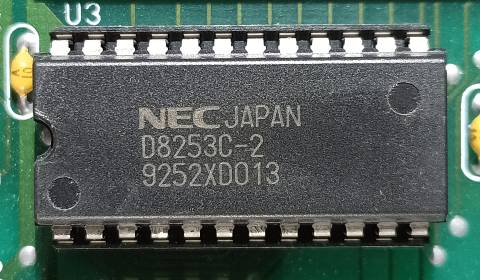Description:
Intel 8253 Programmable Interval Timer
The Intel 8253 is a programmable counter/timer chip designed for use as an Intel microcomputer peripheral. It uses nMOS technology with a single +5V supply and is packaged in a 24-pin plastic DIP.
It is organized as 3 independent 16-bit counters, each with a count rate of up to 2 MHz. All modes of operation are software programmable.
General
The 8253 is a programmable interval timer/counter specifically designed for use with the Intel Microcomputer systems. Its function is that of a general purpose, multi-timing element that can be treated as an array of I/O ports in the system software.
The 8253 solves one of the most common problems in any microcomputer system, the generation of accurate time delays under software control. Instead of setting up timing loops in systems software, the programmer configures the 8253 to match his requirements, initializes one of the counters of the 8253 with the desired quantity, then upon command the 8253 will count out the delay and interrupt the CPU when it has completed its tasks. It is easy to see that the software overhead is minimal and that multiple delays can easily be maintained by assignment of priority levels.
Other counter/timer functions that are non-delay in nature but also common to most microcomputers can be implemented with the 8253.
- Programmable Rate Generator
- Event Counter
- Binary Rate Multiplier
- Real Time Clock
- Digital One-Shot
- Complex Motor Controller
- MCS-85 Compatible 8253-5
- 3 Independent 16-Bit Counters
- DC to 2.6 MHz
- Programmable Counter Modes
- Count Binary or BCD
- Single +5V Supply
- 24 Pin Dual-in-line Package
- Available in EXPRESS
- Standard Temperature Range
- Extended Temperature Range
Disclaimer
The info found in this page might not be entirely correct. Check out this guide to learn how you can improve it.
 Image 1 of 1 (Helen_Croft)
Image 1 of 1 (Helen_Croft)